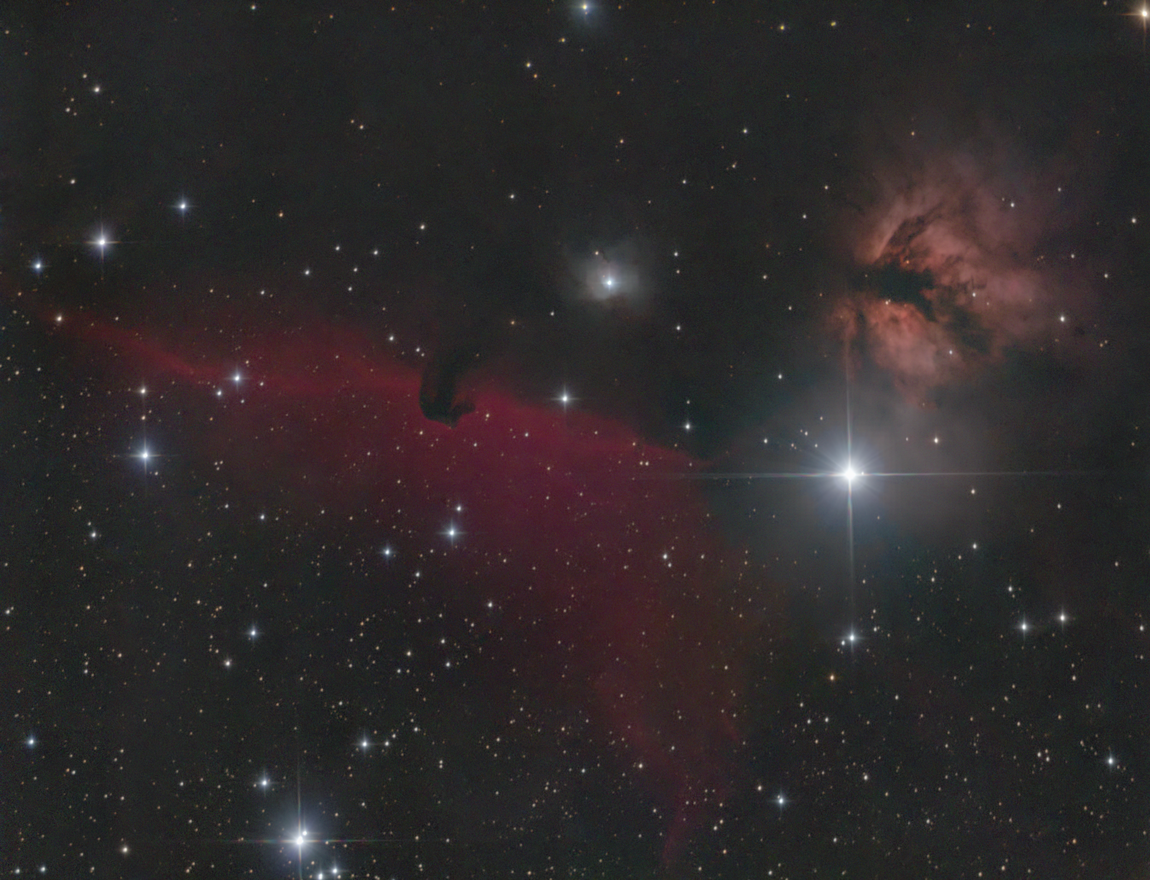B 33, The Horsehead Nebula
On the leftmost edge of Orion’s belt lies the triple star system Alnitak, just in front of the of the Orion B molecular complex and next-door neighbor to some of its finest residents: The Horsehead Nebula, discovered by in 1888 by Williamina Fleming, and the Flame Nebula, discovered in 1786 by William Herschel. Both lie at a distance of approximately 400 parsecs.[1]
The Horsehead Nebula (also known as Barnard 33) is one of the most recognizable nebulae in the night sky due to its resemblance to the silhouette of a horse, stylized similarly to knight in chess. An intrusion from the large dusty region LDN 1630 into the HII region IC 434, it’s an example of an object called a pillar or elephant trunk, pockets of interstellar matter whose exterior density affords them a resistance to erosion caused by stellar wind, similar to hoodoos in geology.[2] Along with NGC 2023,[3] the Horsehead Nebula’s proximity to Earth makes it an ideal sandbox to study photodissociative regions: borders of nebulae where most of the incoming heat comes from high-energy UV radiation, but unlike HII regions are cold and dense enough to remain electrically neutral.[4]
The Flame Nebula (also known as LBN 953, Sh2-277, and sometimes by its associated star cluster NGC 2024) is the primary star-forming region of Orion B. It owes both its high rate of star formation and its unique shape to the turbulent interplay between its desire to collapse under its own gravity and the outwards push of stellar wind from hundreds of newly-formed stars.[5] NGC 2024 is often used as a laboratory to study solar system formation, since an estimated as 85-95% of its stars have accompanying protoplanetary disks.[6] Recent Hubble data suggests that many of these systems may be destined for disintegration, scattered and worn apart by the intense radiation of the surrounding stars before they can survive to form planets.[7]
This image is a stack of just 35 minutes of total exposure time, with each R/G/B filter contributing 25x30s exposures taken at -10°C with binning 2, each calibrated with 25 flats and no dark or bias frames. The lack of darks and biases was actually a surprise to me as I write this (Dec 17); I’m taking some new ones right now and hoping they can still perform all right on the older data. Expect a revision soon! Stacked and calibrated in DeepSkyStacker, and stretched in Siril, with star removal provided by StarNet++ v2.
